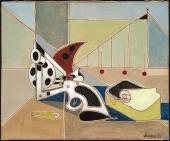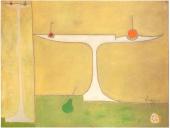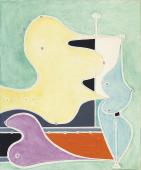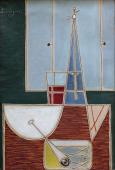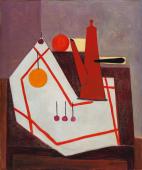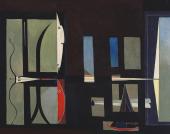The exhibition "Óscar Domínguez: The 'Triple Trait'. 1948-1952" brings together for the first time the works Domínguez made using his triple trait (three-line) technique. In the late 1940s, the artist moved away from his Surrealism of the thirties and into a more figurative world in which his paintings were dominated by geometric compositions influenced by Picasso and done in thick brushwork. In 1948, however, Domínguez embarked on a new stylistic approach termed the triple trait, characterised by his use of a thin line of India ink with a white border on either side to outline the various elements in the composition, like a kind of aura. The works he produced during this period became much purer, rigorous and more balanced, while the drawing that predominates in them is done in sharp, precise fine lines and the colours are luminous once again. This was unquestionably the most positive and optimistic body of work Domínguez ever made.






